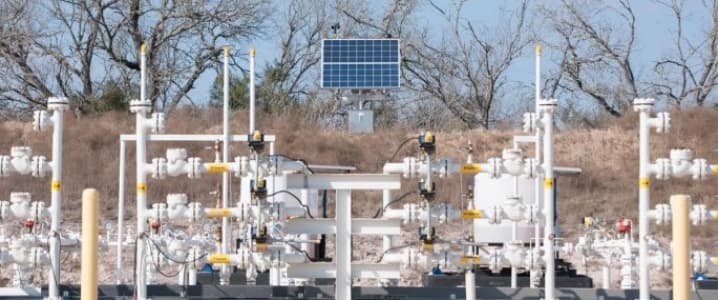Laser-based detectors are the core of three recently publicized methane detection projects that aim to curb uncontrolled methane emissions at oil and gas fields and storage sites. The projects are part of the Methane Detectors Challenge, an initiative by the Environmental Defense Fund, which seeks to limit methane emissions responsible for a quarter of global warming.
Besides being a solid contributor to climate change, methane leaks also mean substantial losses for oil and gas field operators. In the U.S. alone, the losses are estimated by the EDF at US$2 billion annually. On a global level, the sum reaches US$30 billion that is lost through flaring and leaks. Leak monitoring and detecting is at best done from time to time. Now that the industry has been forced by the oil price crash to work hard on improving efficiency, the time is just right for the adoption of such technologies.
Statoil has become the first energy major to deploy a gas leak monitoring system, at a field in Eagle Ford. The solar-powered, laser-based system is in the testing phase now, aiming to ensure round-the-clock monitoring and detection. The system uses tunable laser diodes that were developed by a Colorado startup, Quanta3, which detect the release of methane in the air and send the data to an operator via the cloud.
Yet Statoil was not the first participant in the Methane Detectors Challenge to launch such a system. That was Pacific Gas & Electric, which last month deployed a tunable laser diode monitoring system at a gas storage facility in California. The company says that around 9.8 million metric tons of methane is emitted in the U.S. annually at all stages of the oil and gas supply chain. These are 9.8 million metric tons of gas that could be captured and used purposefully.
A third team taking part in the challenge that announced the launch of its monitoring system in the last few days is a partnership between three research institutions and an aircraft operator. The University of Colorado Boulder, the University of California Davis, and the National Institute of Standards and Technology joined forces with Scientific Aviation on developing their own methane leak monitoring system, again based on laser technology. Related: Saudis Raise March Crude Prices For All Customers
According to lead researcher Greg Rieker, the system, which can send laser beams over distances of up to one mile, can detect methane concentrations in the atmosphere with an accuracy rate of one part per billion. In addition to the ground equipment, the team will also use aircraft fitted with methane detection equipment to estimate the total emissions of the gas at production and storage sites.
All of these projects are at the testing stage, and according to the EDF, there are another 17 laser-based detection systems developed as part of the challenge. This is certainly a step in the right direction, especially given the current state of methane leak detection and reporting.
The EDF says that less than a third of oil and gas companies it reviewed report on methane emissions and none have emission reduction targets. The reason such targets are important, besides the financial losses, is that methane can compromise the status of natural gas as a bridge fuel: methane is the main component of natural gas, and it is a lot more powerful as a greenhouse gas than carbon dioxide. The good news: limiting leaks is cheap, at a penny per 1,000 cu ft of gas produced, says the EDF. So, with all the benefits of detecting and reducing leaks, most of them unintentional, chances are that we will continue to hear about such tech solutions, leveraging what modern technology can offer and using it to save money and cut harmful emissions.
By Irina Slav for Oilprice.com
More Top Reads From Oilprice.com:
- Is Deepwater Drilling About To Make A Comeback?
- The Oil War Is Only Just Getting Started
- Is The Kremlin Funding A Campaign That Undermines U.S. Fracking?


















